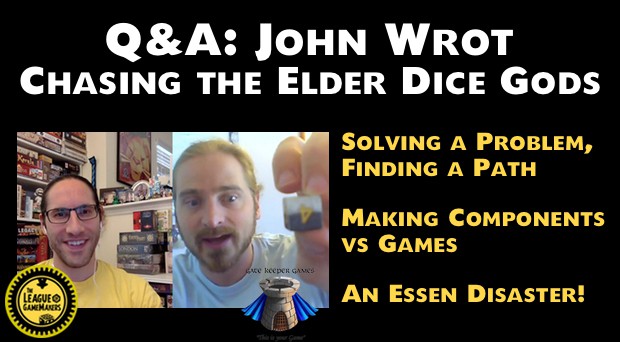
Ryan Sanders (A.K.A. The Inquisitive Meeple) told me he was starting a new interview series about advice for people designing games or navigating the publishing world. That got me thinking… what design advice could I give? What information do I wish I’d had when I started out? What nugget of truth could I pass on to fledgling designers trying to get their game published?
“Advice for navigating the publishing world,” that really caught my attention. I may be a designer with my name on a few boxes, but I have more Game Development credits than I do Game Design credits, and I work with a publisher coordinating art and manufacturing in addition to design and development of games. I don’t know how many other designers are in such a position, or how many publishers have gone through the process of trying to get a game signed by a publisher. Perhaps that puts me in the unique position to compare points of view from both sides of the equation.
DESIGNERS ARE ATTACHED TO THEIR BABY.
I can’t speak for all publishers, but I suspect it’s hard for a publisher to understand just how attached a designer can be to their game. A designer will pour their heart and soul into a project — spending hours, months, sometimes years on it. They understandably want to be as involved as possible with their baby. This is not always true of course, sometimes designers throw something together quickly and assume the publisher will finish the development work, and sometimes designers have other projects to get back to and aren’t as interested in what happens with their design after it’s been signed. But I think for the unpublished, aspiring designer the likely case is the first one I mentioned – their game is their baby, and they are very attached to it.
PUBLISHERS WANT WHAT’S BEST FOR THEIR ADOPTED CHILDREN.
I can’t speak for all designers either, but on the other hand I suspect it’s hard for a designer to understand the work and logistics involved in developing a game; creating the artwork, editing the rules, manufacturing the pieces, funding (through Kickstarter or otherwise), shipping, and fulfillment of their baby. This will vary with the size and style of the publisher. In some cases publishers — especially small publishers without a lot of staff or games being worked on — will welcome a lot of input from designers, and will include them every step of the way. Other publishers — especially large publishers with lots of staff and multiple games in process at a time — still value a designer’s input, but they cannot realistically allow the designer to sign off on every step of the process. This doesn’t mean they don’t want what’s best for their adopted children.
HOW MUCH CREATIVE CONTROL DO YOU WANT?
My advice to designers who want to see their game published is this: First of all, decide what it is you want. Do you want executive control over every aspect of the game? If not, then that’s great — my advice is to offer help when asked (reviewing art files or rules), but don’t get upset if the publisher doesn’t show you every piece of art as it comes through. If there are too many people making comments and suggesting changes on every icon and every sketch, the project will never move forward. This impacts the deadlines and schedule not only for that project, but for all projects in the pipeline.
If a lot of creative control is what you’re looking for, then that’s something you might want to talk to a potential publisher about before signing a contract with them. Some publishers are very flexible with allowing that, some even welcome it. But to be frank, when push comes to shove there’s going to eventually come a time when the publisher will have to make a decision without consulting you, and in my opinion that’s not something to get upset about. Ultimately the publisher needs to publish the game, and they have more to think about to get that done than just the designer’s concerns.
THERE IS ANOTHER OPTION.
If you really want to be in control of every aspect of your game, then why shop it around to publishers? With the advent of Kickstarter and the rise of crowdfunding in general, it’s easier than ever for a designer to publish their own game. For some designers, self publishing is exactly what they want to do. David Sirlin (designer of such games as Yomi, and Puzzle Strike) will tell you that he decided to become a publisher for that very reason — he wanted 100% executive control over his games, and it seems to be working out very well for him. As a more recent example, after getting a couple of games published via the traditional route, Gil Hova (designer of Prolix and Battle Merchants) has decided to throw his hat in the ring as well. He’s currently Kickstarting a game called Bad Medicine, and if that goes well I’m sure we’ll see more down the line from Formal Ferret Games.
THE BOTTOM LINE.
My advice to designers has always been this: If you want to be a publisher, then that’s fine: try your hand at publishing. But if you want to be a designer, then be a designer! I think most designers want to design games, they don’t want to deal with manufacturers and artists, coordinate with distributors and fulfillment, and they don’t want to run a business. If that describes you as a designer, then my advice is to worry less that a publisher is going to make a mess of your game. Trust them to do their job, and concentrate on your next big hit!








